Emo vs Goth: What is the difference between them? 2024 Updated

As a seasoned enthusiast deeply entrenched in the intricacies of subcultural movements, I bring years of firsthand experience and scholarly exploration to demystify the often-confused realms of Emo and Goth. With both embracing dark aesthetic elements, such as smoky makeup, piercings, and tattoos, their similarities can be misleading. Originating from the vibrant punk rock scene of the late 1970s and early 1980s, these two movements have significantly shaped global art, culture, and media. Let's dive into the nuanced distinctions between these captivating styles, drawing from my extensive background to illuminate their unique characteristics and influences.
Overview of the difference between Goth and EMO
|
Perspective
|
Goth
|
EMO
|
|
Appearance
|
|
|
|
Music
|
|
|
|
Subculture
|
|
|
|
Subgenres
|
|
|
|
Origin
|
|
|
|
Peak popularity
|
|
|
What is Emo?: The History Of Emo.
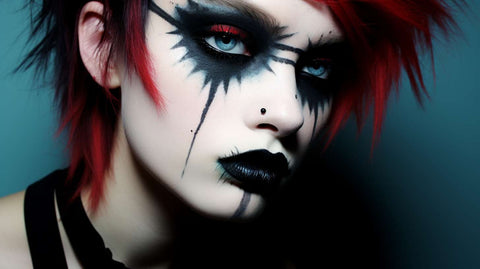
To figure out the difference between them, we first need to figure out their cultural origins separately, so let's start with Emo.
First Generation Of Emo.
Emo is a short term for “emotive hardcore”, a genre of music that originated from the hardcore punk scene in Washington, D.C. in the mid-1980s. Emo music is characterized by its emotional and expressive lyrics, often reflecting personal struggles, pain, loss and loneliness. Some of the pioneers of emo music are bands such as Rites of Spring, Embrace, Fugazi, and Minor Threat. This period of EMO can also be considered as the first generation of EMO.
The second generation of Emo
Over time, EMO began to be influenced by other musical styles such as indie rock and math rock, forming different branches and genres. Some of the most representative ones are:
Indiemo: A genre of music created by bands such as Sunny Day Real Estate that introduced elements of indie rock into EMO, also known as Post EMO Indie Rock2. This period of EMO is also known as the second generation of Emo in the 90s.
Third Generation Emo
Twinkle Emo: A genre created by bands like Cap'n Jazz and American Football that introduced elements of math rock into EMO, also known as Twinkle Daddies or Midwest Emo2. This period of EMO is also known as third Generation EMO or 00s EMO.
Emo Subculture

In addition, Emo is not only a genre of music but also a subculture and a lifestyle. Emo fans, or emos, are usually teenagers or young adults who identify with emo music and its themes. Emos often express themselves through their fashion, hairstyle, makeup, piercings, and tattoos. Emos typically wear tight jeans, black or colorful T-shirts with band logos or slogans, hoodies, studded belts, and sneakers or skate shoes. Emos values authenticity, individualism, and creativity. They often write diaries or poems, listen to music, and join social networks and community events to share their feelings and opinions.
The EMO subculture was originally formed by listeners of 80s EMO-core bands and has since evolved and changed with the influence of 90s EMO and 00s EMO bands as well as other popular cultures such as movies, anime, and the internet. Emo burst into the mainstream as a trendy and cool subculture in the 00s.
Emo Fashion Outfits
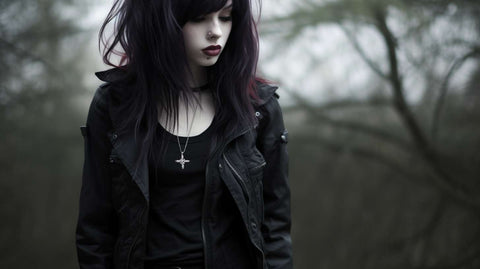
Emo fashion dressing is a creative and expressive way of dressing that reflects personality and emotions. Emo fashion is not limited by rules or trends but by imagination and preference. Emo fashion is a form of art and self-expression. The more typical styles of dress are as follows:
- Black or dark colors: They create a contrast or reflect a mood of sadness, anger or rebellion.
- Skinny jeans or leggings: They emphasize the legs and create a slim silhouette.
- Band t-shirts or hoodies: They show musical taste and preferences.
- Studded belts or bracelets: They add edge and punk to the outfit.
- Converse shoes or boots: They are comfortable and casual.
- Eyeliner or mascara: They accentuate the eyes and create a dramatic look.
- Bangs or fringes: They cover part of the face and create a mysterious effect.
What is Goth?: The History Of Goth Culture.
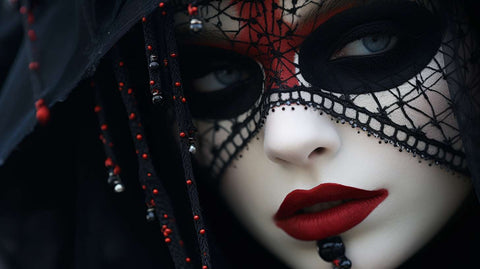
Do you love black clothes, dark makeup and spooky vibes? Then you might be interested in the history of goth fashion, the style that celebrates the darker side of life. Here’s how it all started and how it changed over the years:
Gothic Origins
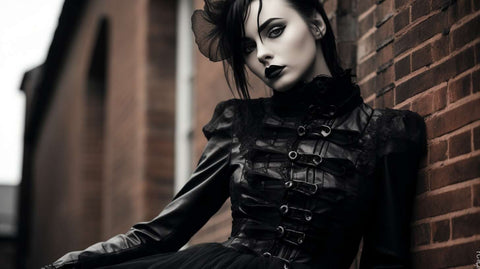
In the early 80s, a new wave of music emerged in the UK, inspired by post-punk bands. It was called gothic rock, and it was darker, heavier and gloomier than anything before. Bands like Siouxsie and the Banshees, Bauhaus, the Cure, and Joy Division created a haunting sound that drew from 19th-century gothic novels, horror movies and counter-culture.
Goth Outfit
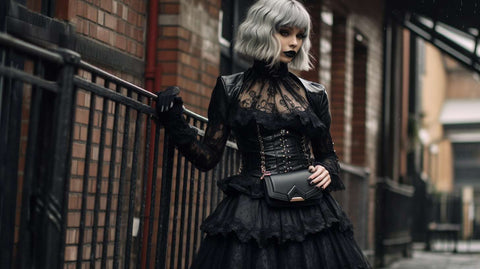
Gothic outfits offer a way to express one's dark and mysterious personality through clothing, makeup, jewelry, and accessories. Influenced by Gothic literature, art, architecture, and culture, as well as historical periods such as the Victorian and medieval eras, goth fashion typically incorporates black or dark colors, lace, velvet, leather, corsets, fishnets, boots, spikes, studs, chains, crosses, skulls, bats, and roses. Goth outfits can also vary depending on the subgenre or style of goth, including Romantic Goth, Cyber Goth, Victorian Goth, Pastel Goth, and more, each with its own unique aesthetic and preferences.
Certain accessories become indispensable in crafting an authentic gothic ensemble. Rings boast elaborate designs, often featuring dark gemstones or Gothic motifs, and chokers adorned with intricate lace patterns, velvet, or metals play pivotal roles. These elements contribute depth and character, enriching the gothic aesthetic with a sense of mystery and sophistication.
Goth Subculture

Gothic subculture is a cultural movement that emerged from the post-punk music scene in the early 1980s. It is characterized by a love of gothic rock music, which explores dark, introspective and romantic themes.
Gothic subculture also draws inspiration from Gothic literature, art, architecture and culture, as well as from historical periods such as the Victorian and Medieval eras. Gothic subculture expresses itself through Gothic clubs, fashion, publications, art, literature and media.
Gothic subculture celebrates creativity, individuality, nonconformity, and intellectualism. Gothic subculture is not a homogeneous group, but a diverse and dynamic one. It has many subgenres and variations, such as Cyber Gothic, Romantic Gothic, Victorian Gothic and many more.
Gothic subculture may embrace darker themes, but it should not be misjudged and stereotyped by mainstream society as depressive, violent, or evil; these terms do not reflect the true nature of Gothic subculture. According to the author’s understanding, I prefer to call the Gothic subculture the darkest aesthetic; they are romantic and elegant.
If you are interested in Goth subculture, this article, which focuses on Goth brands, will help you learn more about it.
You May Also Like:
Psychological and Emotional Nuances of Emo and Goth Subcultures
Exploring the "Psychological and Emotional Nuances of Emo and Goth Subcultures," it's essential to recognize how each distinctly channels emotional expression and psychological themes. Emo culture delves into the introspective, navigating the complexities of personal emotion and identity, often manifesting in expressive music and fashion. In contrast, Goth culture engages with existential and darker themes, presenting a deeper resonance through its art and musical choices. This juxtaposition reflects not only stylistic differences but divergent emotional landscapes and psychological explorations within these vibrant communities.
So, What Is The Difference Between Emo & Goth?
EMO and Goth are two distinct subcultures that originated from the punk rock scene. Although they share a common origin, they differ significantly in terms of music, fashion, subculture, origin, peak popularity, and subgenres. EMO, characterized by its emotional and personal nature, stands in contrast to the dark and mysterious essence of Goth. EMO music draws inspiration from emotional expression and personal experiences, while Goth music finds its roots in Gothic literature, art, and culture.
When it comes to fashion, EMO leans towards a more casual and band-oriented style, while Goth fashion tends to be elaborate and influenced by historical elements. The EMO subculture is particularly popular among teenagers, who are often perceived as overly sensitive, angsty, and melancholic. On the other hand, the Goth subculture represents a cultural movement that values non-conformity, creativity, and intellectualism.
EMO originated in the United States from the punk rock and post-hardcore music scene, whereas Goth emerged from the post-punk music scene in the United Kingdom. EMO reached its peak popularity from the late 1990s to the early 2010s, while Goth experienced its heyday from the late 1970s to the early 1990s.
In terms of subcategories, EMO has fewer variations compared to Goth. Some notable EMO subgenres include Emotive Hardcore EMO, Screamo EMO, and Pop Punk EMO, among others. Conversely, Goth boasts a plethora of variations and subcategories, such as Romantic Goth, Cyber Goth, Victorian Goth, Pastel Goth, and many more.
By now, you should have a clear understanding of the similarities and differences between Goth and EMO, and I hope this article has answered your questions. If you're interested in Gothic or EMO culture, check out the Gothic and EMO style Stuffed Animals, there's bound to be one you like.


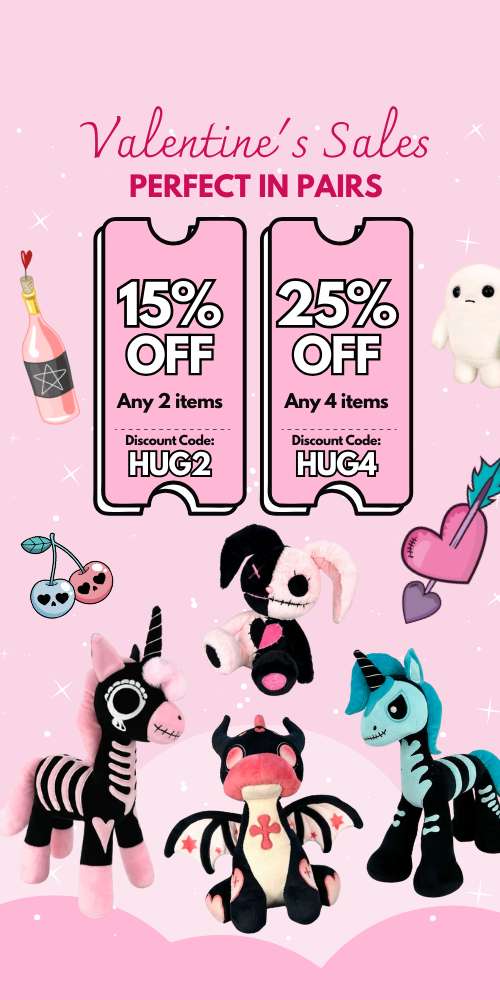


4 comments
The difference between emo and Goth is very simple.
Emo wants to die.
Goths want everybody else to die.
Cue black clothing and spooky stuff.
Your post is incredibly helpful. I truly appreciate the Gothic Attitude you bring to your content
Yes they are interchangeable, a person can be a mix of all kinds of things. I’m a mix of emo, goth, hard rock and country. Just be yourself and live your best life.
Very informative. Thanks.
Are they interchangeable? Can a person be a mixture of both or do they have to be one or the other?